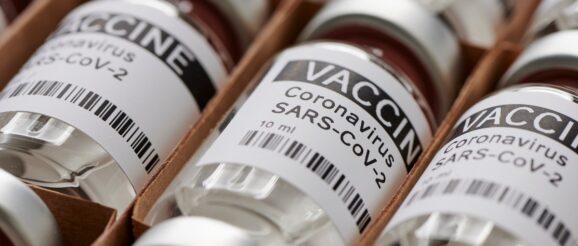America Third? U.S. Leads in COVID-19 Vaccine Innovation, but Red Tape Holds Us Back – In Defense of Liberty

December 11, 2020
By Naomi Lopez
While the approval of a COVID-19 vaccine seems imminent, the process of getting to this point is a reminder that while the U.S. leads the globe in drug innovation and development, the federal bureaucracy, red tape, and continued inability to adapt to an acceleration in medical advances has never been more evident.
Yesterday, the U.S. Food and Drug Administration (FDA) held a meeting to recommend whether to issue an Emergency Use Authorization (EUA) for the Pfizer-BioNTech COVID-19 vaccine. But Pfizer/BioNTech applied for EUA on November 20,leaving many wondering why it took a full 20 days to hold this meeting. Meanwhile, Americans are already watching the aged and healthcare workers in the U.K. receive their first of two COVID-19 vaccination doses, and Canadians will soon follow, as they approved emergency use earlier this week.
In the U.S., the Vaccines and Related Biological Products Advisory Committee has determined that the vaccine has a “favorable safety profile, with no specific safety concerns identified that would preclude issuance of an emergency use authorization” and yesterday recommended EUA approval, but their recommendation is not binding. In other words, the vaccine seems to meet the requirements for EUA approval. FDA Commissioner Stephen Hahn makes the final determination and is expected to grant the EUA as early as next week.
It is important to understand that an EUA is not a final approval. In fact, the manufacturer is still required to conduct follow-up studies and evaluation for safety and effectiveness as part of the EUA. And the FDA always retains the authority to revoke approval if a concern later arises. This holds true under both EUA and for all drugs and biologics that receive final FDA approval, not only COVID-19 related vaccines and treatments.
It should also be noted that the FDA was expected to provide EUA for a vaccine that was 50 percent effective. But both the Pfizer-BioNTech and a second EUA vaccine candidate, Moderna, both have preliminary results of 90+ percent efficacy—well above the FDA’s desired benchmark. Moderna filed for EUA on November 30, and the advisory hearing is meeting on December 17.
But perhaps most striking is that Moderna used novel technology to design their vaccine candidate back in January of this year in a matter of one weekend—before the first documented COVID-19 case in the U.S. David Wallace-Wells makes a solid case that the vaccine could have been ready in as little as three months and what that means for our approach to a pandemic in his recent Intelligencer article, “We Had the Vaccine the Whole Time”:
“…our approach to the pandemic here raises questions, too, about the strange, complicated, often contradictory ways we approach matters of risk and uncertainty during a pandemic—and how, perhaps, we might think about doing things differently next time. That a vaccine was available for the entire brutal duration may be, to future generations trying to draw lessons from our death and suffering, the most tragic, and ironic, feature of this plague.”
Pfizer is standing by and ready to begin vaccine distribution within hours of EUA approval. Working with federal health authorities, all 50 states have developed distribution plans and are ready to begin initial vaccinations in the months-long process of, hopefully, allowing the nation to return to health and full economic activity.
Scientific medical advances and the commitment of companies have been made it possible for us to get us to this point. But instead of continuing to press forward amid this crisis, government is making us wait.
Naomi Lopez is the Director of Healthcare Policy at the Goldwater Institute.
